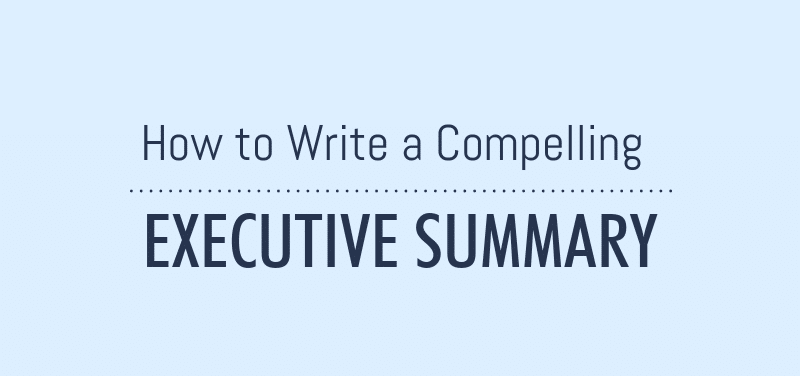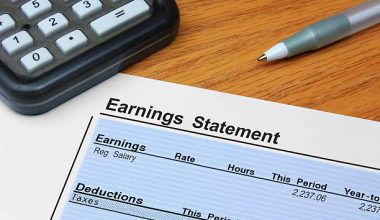An executive summary is a high-level overview of a company plan. Its goal is to summarize the important ideas of a text for its readers, saving them time and preparing them for the next section. Read on to learn how to write an effective executive summary for a business plan and for obtaining loans in a bank.
What is an Executive Summary?
A business plan executive summary is a quick introduction and summary of your business strategy. It should describe your company, the problem it answers, its target market, and key financial figures.
An excellent executive summary captures the attention of your reader and informs them of what you do and why they should read the rest of your business plan or proposal. It is fairly uncommon for investors to make an early judgment based only on an executive summary. Hence it is critical to get it properly. We’ll show you how to create an executive summary that distinguishes your business plan from the competition.
As a result, the executive summary is frequently referred to as the most significant portion of the business plan. If it fails to pique the reader’s interest, the plan will be filed away unread – a nightmare if you’ve developed your business plan to secure funding for your new venture. (Getting money for a start-up isn’t the only reason to prepare a business plan; there are several more that are equally vital.)
The executive summary is usually written last because it is an overview of the complete plan (and writing it last can make it much easier).
What Information Should Be Included in an Executive Summary?
The information you must give differs based on whether your company is a startup or an established one.
One of the primary aims of a beginning business plan is to persuade banks, angel investors, or venture capitalists to invest in your company by providing initial cash in the form of a loan or equity finance. To do so, you’ll need to build a strong case for your business idea. This makes your executive summary even more vital. The following sections are typical in an executive summary for a startup company:
- Describe the necessity or the opportunity for a business.
- Making the most of the opportunity, explain how your company will service the market.
- The target market – define the consumer base that you intend to target.
- Business model – explain your products or services and how they will appeal to your target market.
- Marketing and sales strategy – describe succinctly how you want to sell your products/services.
- The competition – explain your competitors and your market share strategy. What is your competitive advantage, for example, what will you provide clients that your competitors will not?
- Financial analysis entails summarizing the financial plan, including estimates for the next three years.
- Owners/Staff – explain the venture’s owners and key staff members, as well as the knowledge they bring to the table.
- Implementation strategy – Outline the timeline for moving your company from the planning stage to the opening of its doors.
Executive Summary Contents For Established Businesses
In the case of established businesses, the executive summary often includes information about accomplishments, expansion goals, and so on. A typical executive summary outline for a well-established company would include:
- Mission Statement — Expresses the objective of your company. Describe your company’s mission, key values, and business philosophy in a few phrases.
- Firm Information – Provide a brief history of your company, including a description of your products and/or services, the date and location of its establishment, the names of the owners and important workers, and data such as the number of employees, business locations, and so on.
- Firm Highlights: highlight the evolution of the business, including year-over-year revenue increases, profitability, increases in market share, client count, and so on.
- Financial Statement: Provide a brief financial summary if the goal of upgrading the company plan is to seek extra financing for expansion.
- Future objectives – explain your company’s objectives. If you are seeking financing, describe how the additional funds will be used to expand the business or generate revenues in other ways.
How Do I Write a Business Plan Executive Summary

Begin by going through the list and writing one to two sentences about each issue (depending on whether your business is a startup or an established business). No longer!
The Simplest Way to Write One
Has difficulty getting started? The simplest way to write the executive summary is to go over your business plan and extract a summary phrase or two from each of the sections you’ve previously prepared.
When you compare the above list to the components defined in the Business Plan Outline, you can see how well this could function.
Finish your executive summary of your business plan with a gripping final line or two that answers the reader’s query, “Why is this a winning business?”
Read Also: Example of a Business Plan Executive Summary
Tips on how to Write the Executive Summary of a Business Plan
#1. Concentrate on delivering a summary.
The details will be included in the business plan, and whether bank managers or investors, the readers of your plan do not want to spend their time.
#2. Maintain a strong and cheerful tone in your discourse.
Don’t use sloppy wording in your executive summary. Instead of saying, “Dogstar Industries might be in a good position to receive government contracts,” say, “Dogstar Industries will be in a good position…”
#3. Keep it brief
Resist the urge to fill out the executive summary of your business strategy with specifics (or pleas). The executive summary’s purpose is to offer the facts and encourage your reader to read the whole of the business plan, not to tell him everything.
#4. Improve your executive summary.
Read it out loud. Is it smooth, or does it sound choppy? Is it clear and concise? Once it sounds excellent to you, have someone else read it who is unfamiliar with your industry and provide comments for improvement.
#5. Make it relevant to your target audience.
If the goal of your business plan is to entice investors, for example, your executive summary should focus on the potential your company offers and why it is unique. If the goal of your business plan is to obtain a small business loan, emphasize what traditional lenders like to see, such as management’s industry knowledge and the fact that you have both collateral and methods in place to reduce the lender’s risk.
Put yourself in the shoes of your readers… and reread your executive summary. Does it pique the reader’s curiosity or excitement? If not, why not?
How to Write an Executive Summary for a Bank Loan
Bankers, contrary to popular belief, never take chances on business proposals. To entice bankers to continue reading, the executive summary should include the six primary factors mentioned at the beginning of this article, as well as a few extra aspects that highlight stability, assets on the balance sheet, and financial history, demonstrating that the loan is not dangerous. Banking law, with one significant exception, prohibits banks from lending money to businesses that do not have adequate assets to support the whole amount of the loan and then more. That is a violation of banking regulations.
Professional bankers will request a business plan as part of a loan application because they genuinely want to know and understand your company, but they will not take risks. This overview is not intended to persuade or sell, but rather to reassure and describe.
So what works for a banker’s executive summary is very different from what works for an investor’s summary.
#1. Describe your personal net worth.
Whereas investors want to see startup experience from the management team, bankers want to examine the personal net worth of the firm owners. The more collateral, money, or other investment you have, the more probable it is that you will be able to secure the loan.
#2. Make your financial history and bankable assets available to the public.
Whereas investors are looking for future potential growth, lenders are looking for prior financial history and bankable assets. Attempt to have all financial information about yourself, existing investors, and any previous enterprises available upfront.
#3. Demonstrate your potential for stability and longevity.
Whereas investors are looking for exits, lenders want their commercial borrowers to provide future stability. Although specific numbers are not required, producing a financial plan that outlines growth, future cash flow, costs, and sales over the next 1-3 years might serve as evidence of stability.
#4. Bank loans are exempt from risk.
One prominent exception to the assumption that bankers do not take risks was cited. In the United States, the federal Small Business Administration (SBA) offers programs that collaborate with local company banks to guarantee some of the riskier small business loans, allowing startups and small enterprises to borrow money.
SBA loans, like traditional bank loans, require a sound traditional business plan. The plan should contain a decent executive summary that covers the five primary areas indicated in the first list above. It will still help you to have the financial stability elements written out as you would for a bank. However, the restrictions may be less stringent and allow for more funding for riskier enterprises.
Remember that the executive summary is the first thing your readers will read. If it’s poorly written, it’ll also be the last thing they read, as the rest of your business plan will be placed away unread.
Conclusion
The executive summary is a crucial part of a business plan. Therefore, adequate attention must be given to it. This is because it really determines whether or not someone will continue to read your business plan or loan request report or not.
Executive Summary FAQs
How do you write a good executive summary?
How to Write a Compelling Executive Summary
- Describe a problem, need, or goal. Underneath the words “EXECUTIVE SUMMARY” explain in one or two sentences (at most) why a decision is needed. …
- Describe the desired outcome. …
- Describe your proposed solution. …
- Explain how you’ll overcome risks. …
- Ask for the decision you want to be made.
Where do you put an executive summary?
The executive summary is the first section of the report, plan, or proposal. It appears before the introduction and after the table of content
Does an executive summary have its own page?
Place the executive summary on its own page(s). The first paragraph should immediately capture the reader’s attention, whether it’s a story, surprising fact, or insightful quote. Experts recommend using bullet points (when possible) to present your ideas and keep them concise.
What an executive summary is not?
An Executive Summary is not a summary at all. It is a rationale. It should contain what the reader needs to know to reach a decision, whether it reflects a “summary” of what’s in the proposal or not. If you want to make things easier for them, don’t give them a summary.






